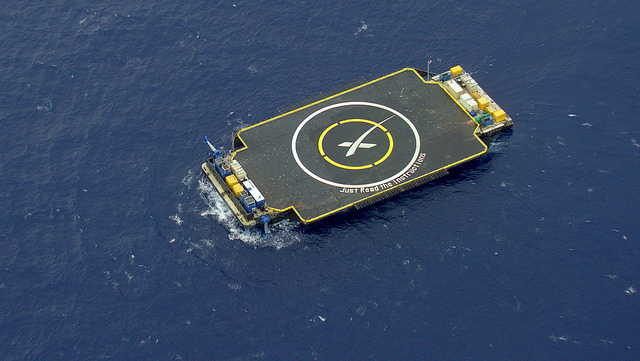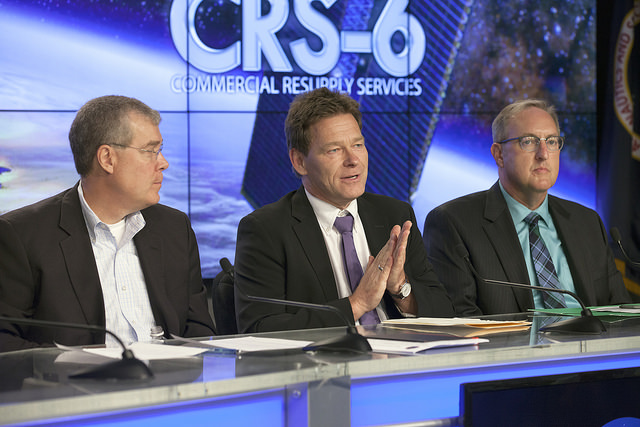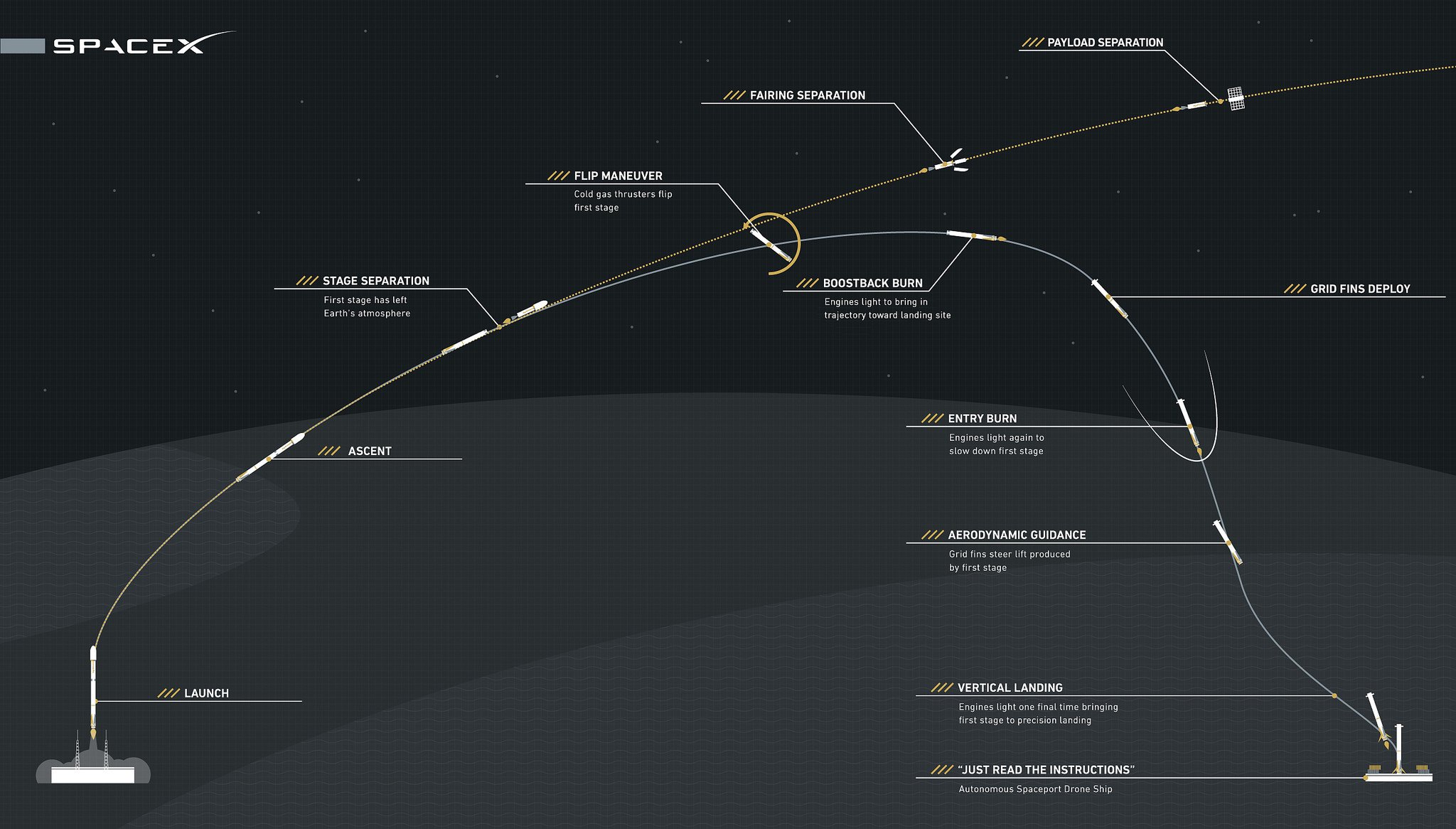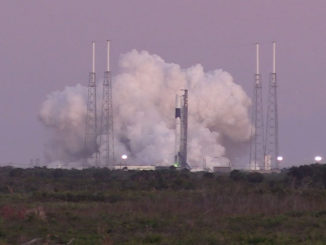Updated April 14 with Musk’s comments, details

Buoyed by lessons from past attempts and a forecast for calm seas, SpaceX engineers expect a good shot at landing a Falcon 9 booster on a stationary platform in the Atlantic Ocean on Tuesday after liftoff from Cape Canaveral.
If the Falcon 9 rocket’s first stage sticks the landing, it would mark SpaceX’s biggest achievement yet in the company’s long-held goal of making the launcher partially reusable.
The launch — set for 4:10 p.m. EDT (2010 GMT) Tuesday — will send up 2.2 tons of supplies heading for the International Space Station, part of a multibillion-dollar contract with NASA covering 15 resupply missions through the end of 2017.
The launch was delayed from Monday after the threat of lightning from a nearby thunderstorm forced an abort in the countdown.
Scattered rain showers and clouds are forecast in the recovery zone 200 miles northeast of Cape Canaveral, but seas are favorable with waves of four-six-feet.
SpaceX plans to use the flight for another test of the rocket’s descent system, a collection of technologies affixed to the booster including aerodynamic grid fins, variable thrust engines and four landing legs.
Tuesday’s launch marks the second time SpaceX has tried to recover a Falcon 9 first stage booster. Nearly everything worked the last time after a Jan. 10 launch, but the cylindrical rocket’s stabilizing fins ran out of hydraulic steering fluid, causing the booster to topple over as it came in for landing on the specially-outfitted barge, which SpaceX calls an autonomous spaceport drone ship.
Engineers added more fluid for subsequent launches, and SpaceX’s chief engineer and vice president of mission assurance Hans Koenigsmann predicted better chance of recovering the rocket than the 50-50 odds he shared before previous attempts.

“Four-to-six foot swells are nothing,” Koenigsmann said. “We did also upgrade the drone ship so it can keep position better. We can tolerate a higher wind and swell level than previously.”
SpaceX hoped to target a drone ship landing after a satellite launch in February, but the barge ran into technical snags and weather proved too severe for the vessel to handle.
“I guess together with the improvements on the vehicle’s first stage and the improvements on the drone ship itself, I would up my probabiliy to 75 percent at this point in time,” Koenigsmann told reporters Sunday. “Maybe 80.”
SpaceX founder and chief executive Elon Musk was more circumspect. He predicted a 50 percent chance of landing successfully on Tuesday’s mission.
Odds of rocket landing successfully today are still less than 50%. The 80% figure by end of year is only bcs many launches ahead.
— Elon Musk (@elonmusk) April 13, 2015
Hans Koenigsmann said there were no changes to the Falcon 9’s descent profile after the last mission in February, which touched down in the Atlantic Ocean vertically within about 10 meters — 33 feet — of its target.
The drone ship is named “Just Read the Instructions” after planet-sized starships featured in science fiction author Iain M. Banks’ Culture novels, according to a report in Tor.com.
The vessel was unable to maintain its position in the Atlantic Ocean for the February launch, forcing SpaceX to abandon the barge landing attempt for that mission. Musk said the rocket had a high probability to achieving the landing if the ship was in place.
Koenigsmann agreed.
“If the drone ship had been there, it would have been a good landing,” he said. “That being said, we haven’tt tested the last couple of seconds (of the descent), and that, of course, is important.”

The descent maneuvers begin almost immediately after the Falcon 9 rocket’s booster stage jettisons from the upper stage, which continues into orbit with the Dragon logistics spacecraft.
“After the stage separation, we’re going to flip the stage around 180 degrees,” Koenigsmann said. “We’re going to perform a so-called boost-back burn. That boost-back burn will keep the first stage from falling too far. It keeps it a little bit closer and basically will target the drone ship.
“Then after the boost-back burn, which lasts about half a minute roughly, we’re going to have another shutdown, then we deploy the fins … They’re folded in during ascent and then they come out after the boost-back burn,” Koenigsmann said.
The 14-story first stage will coast to a peak altitude of about 125 kilometers — 77 miles — before falling back to Earth and re-entering the atmosphere.
“That’s the time we do an entry burn,” Koenigsmann said. “The entry burn is literally tapping the brake a little bit so it doesn’t get too hot during the entry. That entry burn is fairly short — it’s about 10 to 15 seconds — and it happens about seven minutes into the flight.”
One of the booster’s nine Merlin 1D engines — occupying the center position the Falcon 9’s “octaweb” engine configuration — will ignite for a landing burn to slow the rocket for touchdown.
“Halfway through the landing burn, the landing legs will deploy,” Koenigsmann said. “Shortly thereafter, we’ll touch down on the ‘Just Read the Instructions.'”
Landing is expected about nine minutes after liftoff, but SpaceX has not released the exact time of touchdown.
Follow Stephen Clark on Twitter: @StephenClark1.



